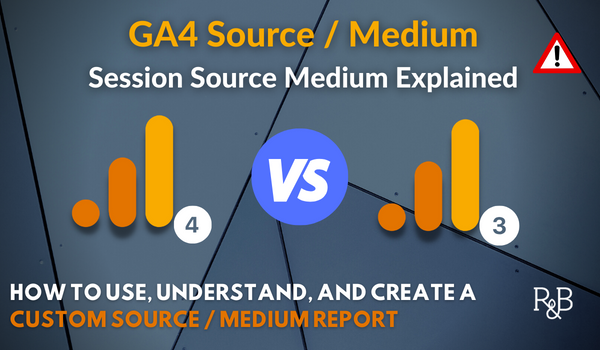Discovering the Concept of Secondary Dimensions in Google Analytics: Definition and Calculated Execution
Discovering the Concept of Secondary Dimensions in Google Analytics: Definition and Calculated Execution
Blog Article
Unveiling the Impact of Second Measurement in Google Analytics on Data Evaluation and Insights
In the world of information analytics, the application of second measurements within Google Analytics has actually emerged as a critical tool for drawing out deeper insights and unraveling complicated patterns that could otherwise stay covered. By peeling back the layers of key data sets, secondary measurements offer a nuanced perspective that enriches the understanding of customer actions, website performance, and the effectiveness of marketing strategies.
Exploring the Concept of Second Measurements
Additional dimensions in Google Analytics supply extra insights by permitting users to analyze primary information in combination with an additional quality. This feature enables an extra detailed understanding of the key information by including an additional layer of information for evaluation. By integrating additional dimensions, customers can dive deeper right into the information and uncover valuable correlations that could otherwise go undetected. By coupling the main data of internet site traffic with second dimensions like demographics or actions, online marketers can obtain a much more thorough view of their target market and tailor their methods as necessary.
By checking out the different secondary measurements available in Google Analytics, users can unlock new insights and optimize their digital marketing initiatives. In significance, second measurements offer as a powerful tool for enhancing data evaluation and driving workable outcomes.
Enhancing Information Analysis With Second Measurements
Having established the foundational understanding of secondary dimensions in Google Analytics and their critical role in information analysis, the emphasis currently moves in the direction of leveraging these additional credit to improve the analysis of analytics data (what is a secondary dimension in google analytics). By incorporating second dimensions right into data analysis, experts can gain much deeper insights right into customer habits, website efficiency, and advertising effectiveness

Moreover, additional dimensions aid in contextualizing main data metrics by giving added layers of info. This contextualization aids in understanding the 'why' behind the data patterns, helping analysts make informed optimizations and choices to enhance overall efficiency. Ultimately, incorporating second dimensions improves the data analysis process, leading to even more strategic activities and meaningful understandings.
Uncovering Hidden Insights Via Secondary Measurements
Exploring the midsts of analytics data with additional measurements exposes beneficial insights that would certainly or else remain covered. By incorporating additional measurements in Google Analytics, services can uncover covert patterns, patterns, and relationships that offer an even more comprehensive understanding of individual actions and website performance. These added layers of information allow analysts to dive much deeper into the main measurements, such as website traffic sources or landing web pages, and obtain a more nuanced point of view on how different variables engage with each various other.
Through using additional measurements, experts can sector and contrast data across various dimensions, enabling them to recognize particular elements that affect individual engagement, conversion rates, and general success metrics. By matching the main dimension of 'device category' with the secondary dimension of 'age team,' marketing experts can pinpoint which age demographics favor accessing the website via mobile devices versus desktop computers. This degree of granularity encourages organizations to make data-driven choices and enhance their methods for much better outcomes. Eventually, discovering covert insights through secondary measurements improves the depth and precision of information analysis, leading to even more enlightened decision-making and enhanced performance end results.
Leveraging Additional Measurements for Actionable Analytics
Structure upon the understandings introduced via additional measurements in Google Analytics, companies can currently harness this enriched data landscape to drive workable analytics and calculated decision-making. By leveraging secondary measurements, companies can dig much deeper into their information to draw out beneficial patterns, fads, and correlations that may have previously gone undetected. This much deeper degree of analysis allows businesses to gain a more detailed understanding of user actions, project efficiency, and total internet site performance.
One secret advantage of making use of second dimensions for actionable analytics is the capability to segment data based on certain criteria. This division allows organizations to customize their techniques and campaigns to different target market teams, causing extra targeted and efficient advertising efforts - what is a secondary dimension in google address analytics. Additionally, additional measurements offer a more holistic sight of user communications, enabling companies to maximize their internet site material, design, and general customer experience
Taking Full Advantage Of Decision-Making With Second Dimensions
To improve tactical decision-making in analytics, leveraging second dimensions in Google Analytics can offer an extra nuanced point of view on user actions and campaign performance. By including additional measurements into information evaluation, organizations can delve much deeper right into the specifics of their website site visitors' interactions and interaction patterns. This additional layer of details permits for a much more comprehensive understanding of just how various variables, such as demographics, tools, or traffic resources, effect vital efficiency indications.

Conclusion
To conclude, using second measurements in Google Analytics plays a vital role in boosting information evaluation and uncovering surprise understandings. By exploring this principle, one can gain a deeper understanding of individual behavior and make educated choices based on actionable analytics. Leveraging second dimensions permits an extra comprehensive interpretation of data and makes the most of the performance of decision-making processes.

Report this page